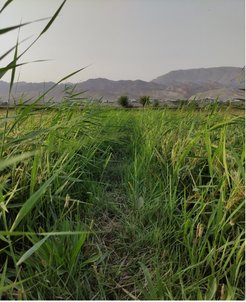Medieval Agricultural Developments and New Introductions in Central Asia
The first millennium AD was a crucial period for economic plant diversification and intensification in Central Asia. That episode of human history has been overlooked by archaeobotanists for decades, with the main focus of previous research on earlier periods. However, the gap in studies of this time period leaves open many interesting questions relating to new plant introductions in the region.

Central Asia was a strategic place, connecting different groups of people and a transition zone between East and West (Spengler, 2019). In addition to trade intensification, Medieval Central Asia underwent numerous economic, political, and cultural changes in that short period of time of our species’ history. All those alterations had significant effects on the agricultural commodity supply and food that we have on our tables right now.
The primary objective of this project is to gain insights about economic plants in the first millennium AD in response to cultural practices and environment. We are running several archaeobotanical projects in important ancient economic and cultural centers in Central Asia, like Bukhara, Afrasiab, Paykend, Panjakent, Kainar, Sanjar-Shakh, and Kok-Tosh.
Archaeobotanical records and historical sources aid us to test different multifaceted questions, such as, can we tie newly introduced plants like cotton, eggplant, watermelon, pomegranate, fig, mulberry, etc. to the urbanization, development of irrigation system, trade, and centralized power in the region at that time interval? What are the parallels and divergences between all those proxies and species diversification in the archaeobotanical records?
